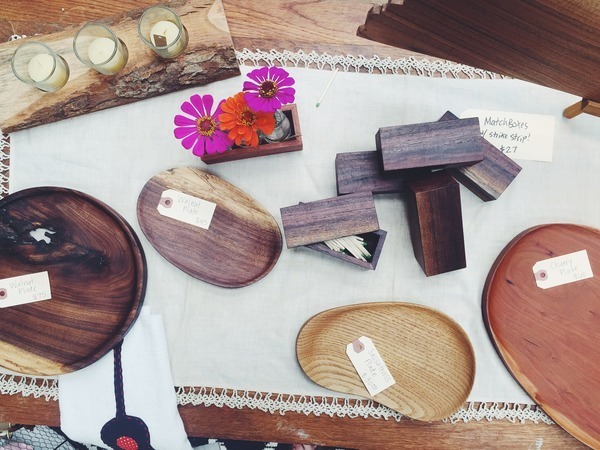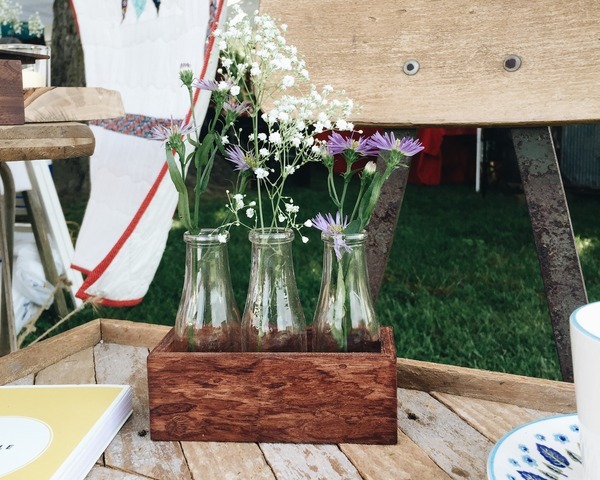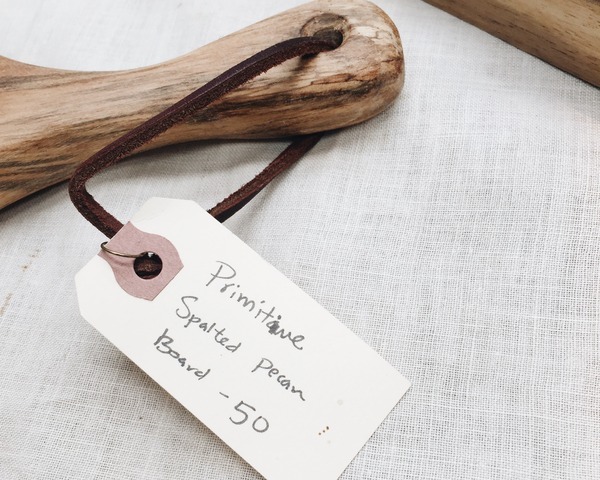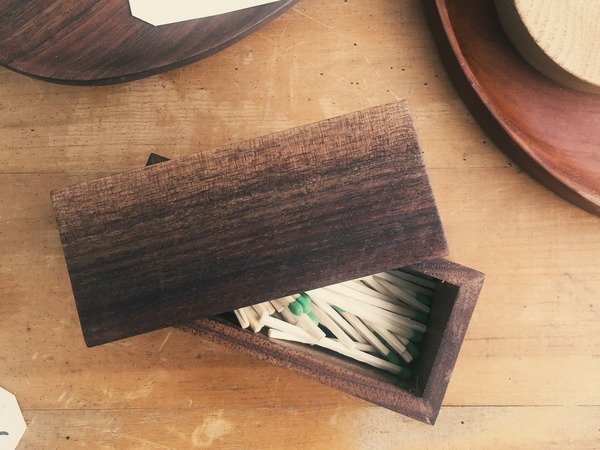Each week in 2015, ManMade is sharing our picks for the essential tools we think every creative guy and DIYer needs. We've selected useful, long-lasting tools to help you accomplish a variety of projects, solve problems, and live a hands-on lifestyle that allows you to interact with and make the things you use every day.
![created at: 07/21/2015]()
Here's the great thing about woodworking... it really hasn't changed much over the last few decades, even centuries. Sure, there are new tools and technologies that make things come together faster, light-weight power tools that cause less fatigue, and safety improvement measures like that table saw that stops if you put your tongue on it. But the techniques are classic, and the purpose and design of hand tools are the same as they were for our grandparent's generation, and their grandparents before. All of which means - there's some staple, go-to techniques and joints and processes that every woodworker should know, and you don't have to make sure your sources are up-to-date before you seek out the best way to cut a mortise.
So, we suggest a basic library of classic woodworking techniques, tool use, and DIY approaches from before there even was a DIY movement...just the "doing." Here are seven of our favorites. Some are pretty new, and some many years old, but the info in them will never be outdated.
![created at: 07/21/2015]()
1. Cabinet Making and Millwork by John L. Feirer. I read this book cover to cover when I first got into woodworking, and its still my number one reference book when researching a project or technique. I believe it was intended as a textbook for a high school shop class, so it's laid out in great 101 style. It includes descriptions of everything from how sandpaper is made to best practices for shop math, and provides details for both hand and power tools.
![created at: 07/21/2015]()
Some of the sections on finishing is a bit outdated, but the techniques for cutting and shaping wood are timeless. There are several different editions, but anything after 1975 will work well. And the vintage photos are kinda awesome.
You can find this everywhere in secondhand bookshops, and online for pennies. Get it. Use it.
![created at: 07/21/2015]()
2. Bill Hylton's Power-Tool Joinery by Bill Hylton. From the editors of Popular Woodworking magazine, this is a go-to for setting up power tools for making joinery. Organized by joint type - rabbets, half-laps, dovetails, etc - it provides detailed instructions show you how to make each joint with every tool possible. I especially like the jigs and fixtures details that show you there's definitely more than one way to skin that cat.
Available for under $2.00 plus shipping at Amazon, or free in the Kindle lending library.
![created at: 07/21/2015]()
3. The Essential Woodworker by Robert Wearing. This one's the polar opposite in approach of Hylton's book above: there's not a single power tool discussed, not even a drill. Instead, it focuses on skills - working real wood that twists, expands, shrinks, goes unsquare, and is of uneven thickness.
![created at: 07/21/2015]() This updated edition includes 500 illustrations for cutting, planing, scraping, sanding, and facing and edging. It then applies those skills to some basic furniture projects such as cabinet cases or carcasses, drawers, handles, and boxes. Super fun, super informative, super traditional.
This updated edition includes 500 illustrations for cutting, planing, scraping, sanding, and facing and edging. It then applies those skills to some basic furniture projects such as cabinet cases or carcasses, drawers, handles, and boxes. Super fun, super informative, super traditional.
Available from Lost Art Press or as a used paperback from Amazon.
![created at: 07/21/2015]()
4. Taunton's Complete Illustrated Guide To Finishing by Jeff Jewitt. This isn't the only book on the subject, but it's a great place to start. The real strength here is the bounty of color photos, which show exactly what's happening as you finalize your projects. It discusses finishing new projects, but also repairing old finishes and matching vintage pieces. It's not a "start here, end there" walk through, so you'll need to familiarize yourself with the way it's organized before beginning a project, but it is indeed a "complete illustrated guide" with encyclopedic-like thoroughness. Belongs in every library.
It's available new everywhere.
![created at: 07/21/2015]()
5. The Woodbook: The Complete Plates. This one contains no instructions, no techniques, and no how-to information. Rather, it's the most complete collection of American wood samples ever created. Assembled between between 1888 and 1913 by New Yorker Romeyn Beck Hough and originally published in fourteen volumes, Taschen's publication "reproduces, in painstaking facsimile, all of the specimen pages from the original volumes... For all trees, now arranged in alphabetical order, three different cross-section cuts of wood are represented (radial, horizontal, and tangential), demonstrating the particular characteristics of the grain and the wealth of colors and textures to be found among the many different wood types. Also included in this special edition are lithographs by Charles Sprague Sargent of the leaves and nuts of most trees, as well as texts describing the trees’ geographical origins and physical characteristics."
![created at: 07/21/2015]()
It's only $23.00. You want this book...just be sure to wipe up that drool.
![created at: 07/21/2015]()
6. The Complete Book of Woodworking by Tom Carpenter. Another great reference book you'll come back to again and again. The latter half contains a bunch of projects you may or may not end up making (I bet you won't) but the details covered in the first half are as good as any overview-style book I've come across. When I want to make sure my process is up to snuff when I'm working on a ManMade post, this is the one I check first.
Available new or used from Amazon.
![created at: 07/21/2015]()
The Workshop Book: A Craftsman's Guide to Making the Most of Any Work Space by Scott Landis. This is not a new book - it was written in 1987. And the photographs reflect that. But what it lacks in that flip-through-the-pictures-and-get-major-workspace-envy, it makes up for in the actual text. It provides, mostly, creative solutions for a variety of different tasks from real professionals working in limited space. If you're interested in upgrading your space or building your dream shop from scratch, this really is a good place to start. It doesn't have a ton of up-to-date and practical advice; its more of a reflection on the nature of workshops in all their variety. And that never goes out of style.
Available new and used at Amazon.
Oh, and a few others I like that aren't quite essential, but super nice to have.
![created at: 07/21/2015]()
Honorable mention #1: The Workbench Design Book by Christopher Schwarz About one thing and one thing only, but it's the best on the subject I've seen. Don't build a new bench without it.
![created at: 07/21/2015]()
Honorable mention #2: Understanding Wood Finishing by Bob Flexner. A very, very fine practical and comprehensive guide to prepping and applying finishes. This one helps you make sense of what you read on the manufacturer's can, and figure out what you're really getting yourself into.
What are your favorite woodworking references? Post 'em in the comments below.
![credit: The Survival Place [http://thesurvivalplaceblog.com/2013/10/13/build-this-cozy-cabin-for-under-4000/] 4k house](http://assets.manmadediy.com/photos/26377/illustration_large_large.jpg?1436903213)
![credit: Steve Maxwell [https://stevemaxwell.ca/wp-content/uploads/2015/03/DIY-Cabin-Building-Plans.pdf] One Room Cabin](http://assets.manmadediy.com/photos/26378/One%252520Room%252520Cabin_large_large_large.jpg?1436903216)











 Here's the thing with cooking up a flavorful piece of protein: it's kinda expensive. Especially if you get the good stuff from a butcher you trust. Mess up a carrot? It's pretty easy to peel and cook up another one. Mess up a 48-day aged Frenched crown roast of prime beef? You're out nearly a Benjamin.
Here's the thing with cooking up a flavorful piece of protein: it's kinda expensive. Especially if you get the good stuff from a butcher you trust. Mess up a carrot? It's pretty easy to peel and cook up another one. Mess up a 48-day aged Frenched crown roast of prime beef? You're out nearly a Benjamin. 
![credit: Metropolitan Museum of Art Online Collection [http://www.metmuseum.org/collection/the-collection-online/search/626692]](http://assets.manmadediy.com/photos/26413/DP352819_large_large.jpg?1436990728) Most art forms involve some level of collaboration, sometimes with people who work long after you've done your part. Or in this case, after you've been dead for 300 years. The five minute video covers Michael Gallagher's delicate process of restoring the vibrancy of this 17th century life-size family painting of the artist's friend was in awful condition when it was acquired by the Metropolitan Museum last year. Gallagher's team spent ten months working on the painting, removing decaying and discolored varnish as well as deconstructing the canvas and restoring places where it was poorly creased and even re-stitched. There's something enticing about watching the artistry this team puts into saving someone else's art, knowing that their work will go unnoticed by almost everyone. I know I'll never look at museum paintings the same way again.
Most art forms involve some level of collaboration, sometimes with people who work long after you've done your part. Or in this case, after you've been dead for 300 years. The five minute video covers Michael Gallagher's delicate process of restoring the vibrancy of this 17th century life-size family painting of the artist's friend was in awful condition when it was acquired by the Metropolitan Museum last year. Gallagher's team spent ten months working on the painting, removing decaying and discolored varnish as well as deconstructing the canvas and restoring places where it was poorly creased and even re-stitched. There's something enticing about watching the artistry this team puts into saving someone else's art, knowing that their work will go unnoticed by almost everyone. I know I'll never look at museum paintings the same way again. 




 These flavourings are perfect for straight up cocktails like an Old Fashioned, a manhattan, or even a whiskey on the rocks. You can also add them to your favourite iced tea to spice it up.
These flavourings are perfect for straight up cocktails like an Old Fashioned, a manhattan, or even a whiskey on the rocks. You can also add them to your favourite iced tea to spice it up.

 I’ve been working in my shop several days a week for a few years now, and it shows. When it’s polished up, it’s useable, but the whole thing seems to unravel into chaos within minutes of starting a project. The main problem, as in most things in life, is a lack of organization. I tell my kids daily that “every toy has to have a home”, but I have a lot of orphan tools in my shop that simply occupy the nearest shelf. Honestly, I love my shop. I’ve made it my own and isn’t that really what counts? Well not really. Today after tripping over a cord, wasting 20 minutes searching for a square and just about losing it when I spilled my iced tea all over the router table I decided it was time to begin my long awaited upgrade. My shop is dusty, disorganized, and work doesn’t flow well through it, and all efforts to bring in some upgrades have just turned it into a haphazard mess and at this point I’m ready to start from scratch. My goal with these projects is to show in detail the steps to some major upgrades in the shop, without the major cost. My budget on this project is minimal at best, and I’ll keep track so it will be easy to see how much each step takes. Here’s what I’ll be doing in the next few months to make my space into something more enjoyable and much easier to use:
I’ve been working in my shop several days a week for a few years now, and it shows. When it’s polished up, it’s useable, but the whole thing seems to unravel into chaos within minutes of starting a project. The main problem, as in most things in life, is a lack of organization. I tell my kids daily that “every toy has to have a home”, but I have a lot of orphan tools in my shop that simply occupy the nearest shelf. Honestly, I love my shop. I’ve made it my own and isn’t that really what counts? Well not really. Today after tripping over a cord, wasting 20 minutes searching for a square and just about losing it when I spilled my iced tea all over the router table I decided it was time to begin my long awaited upgrade. My shop is dusty, disorganized, and work doesn’t flow well through it, and all efforts to bring in some upgrades have just turned it into a haphazard mess and at this point I’m ready to start from scratch. My goal with these projects is to show in detail the steps to some major upgrades in the shop, without the major cost. My budget on this project is minimal at best, and I’ll keep track so it will be easy to see how much each step takes. Here’s what I’ll be doing in the next few months to make my space into something more enjoyable and much easier to use:






 The saying goes, "Measure twice, cut once." So does that mean that the layout and setup process is twice as important as the sizing and milling? Absolutely. In fact, it may be more like three or four more times. Any person who's completed a full-on woodworking project can attest: you spend much, much more time getting your parts and tools ready then you do actually using them. And if you use power tools, the cutting time is trimmed down even more.
The saying goes, "Measure twice, cut once." So does that mean that the layout and setup process is twice as important as the sizing and milling? Absolutely. In fact, it may be more like three or four more times. Any person who's completed a full-on woodworking project can attest: you spend much, much more time getting your parts and tools ready then you do actually using them. And if you use power tools, the cutting time is trimmed down even more. 






![credit: Popular Mechanics [http://pop.h-cdn.co/assets/15/21/980x488/gallery-1432316662-gallery-1432308820-landscape-1432300744-delosh-grilled-foods-all.JPG]](http://assets.manmadediy.com/photos/26460/gallery-1432316662-gallery-1432308820-landscape-1432300744-delosh-grilled-foods-all_large_large_large_large_large.JPG?1437158878) Most men love some good summer-grilled meat, but that isn't the only thing you can grill...
Most men love some good summer-grilled meat, but that isn't the only thing you can grill... ![credit: [http://www.popularmechanics.com/home/how-to/a15705/13-surprising-foods-that-taste-delish-on-the-grill/]](http://assets.manmadediy.com/photos/26461/1432316272-syn-58-1432304898-delish-grilled-donut_large_large_large_large_large.jpg?1437158882)
![credit: Popular Mechanics [http://www.popularmechanics.com/home/how-to/a15705/13-surprising-foods-that-taste-delish-on-the-grill/]](http://assets.manmadediy.com/photos/26462/1432316293-syn-58-1432305143-delish-grilled-mango_large_large_large_large_large.jpg?1437158886)
![credit: Jack Threads [https://www.jackthreads.com/jtedit/2015/07/07/style-basics-101-how-to-properly-clean-canvas-sneakers]](http://assets.manmadediy.com/photos/26496/tmg-gift_guide_variable_large._large.?1437416291) I recently heard an episode of the NPR podcast,
I recently heard an episode of the NPR podcast, ![credit: Jack Threads [https://ak-images3.jackthreads.com/v1/image/1510730/size/tmg-gift_guide_variable]](http://assets.manmadediy.com/photos/26497/tmg-gift_guide_variable_large._large.?1437416296)

















![credit: Lowes [http://www.lowes.com/creative-ideas/gardening-and-outdoor/concrete-sphere-fountain/project] Lowes Concrete Sphere Fountain](http://assets.manmadediy.com/photos/26486/Concrete-Sphere-Fountain-102000947-12_large.jpg?1437412467) Concrete is the ideal material for outdoor life. It looks great, holds up to just about anything, and blends well with wood and greenery. Here's a weekend project to make a concrete fountain that will class up any outdoor space. Outdoor fountains are a great feature in a backyard to hide those background noises like traffic or annoying neighbors, a bit of babbling water just makes it all fade away a bit more. The great thing about
Concrete is the ideal material for outdoor life. It looks great, holds up to just about anything, and blends well with wood and greenery. Here's a weekend project to make a concrete fountain that will class up any outdoor space. Outdoor fountains are a great feature in a backyard to hide those background noises like traffic or annoying neighbors, a bit of babbling water just makes it all fade away a bit more. The great thing about ![credit: Lowes [http://www.lowes.com/creative-ideas/gardening-and-outdoor/concrete-sphere-fountain/project] Adding the base](http://assets.manmadediy.com/photos/26487/Concrete-Sphere-Fountain-102000935-09_large.jpg?1437412473)
![credit: Lowes [http://www.lowes.com/creative-ideas/gardening-and-outdoor/concrete-sphere-fountain/project] Sphere fountain](http://assets.manmadediy.com/photos/26488/Concrete-Sphere-Fountain-101969896-hero_large.jpg?1437412478)





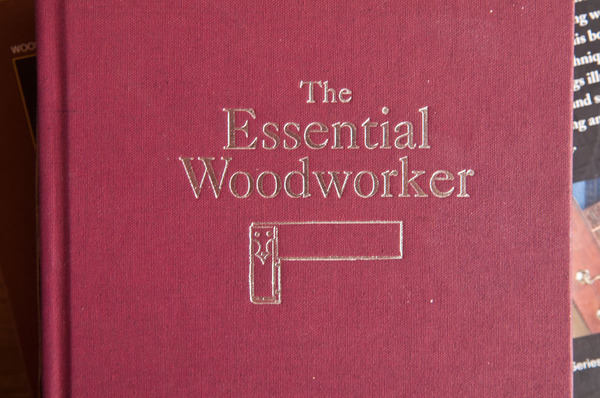
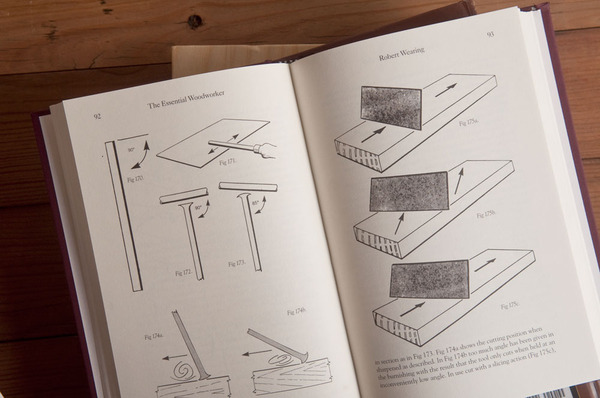 This updated edition includes 500 illustrations for cutting, planing, scraping, sanding, and facing and edging. It then applies those skills to some basic furniture projects such as cabinet cases or carcasses, drawers, handles, and boxes. Super fun, super informative, super traditional.
This updated edition includes 500 illustrations for cutting, planing, scraping, sanding, and facing and edging. It then applies those skills to some basic furniture projects such as cabinet cases or carcasses, drawers, handles, and boxes. Super fun, super informative, super traditional. 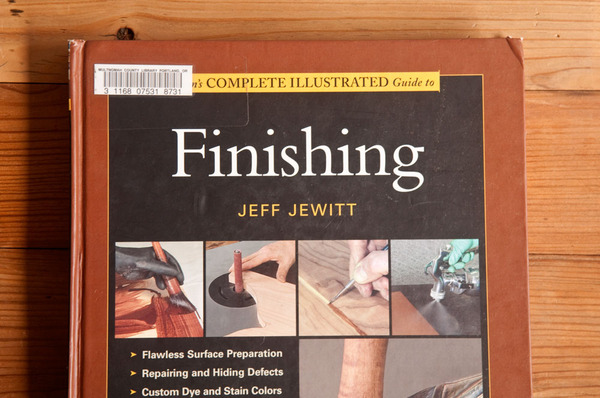

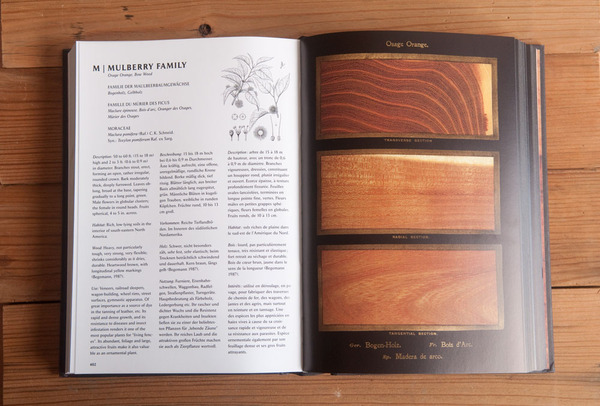

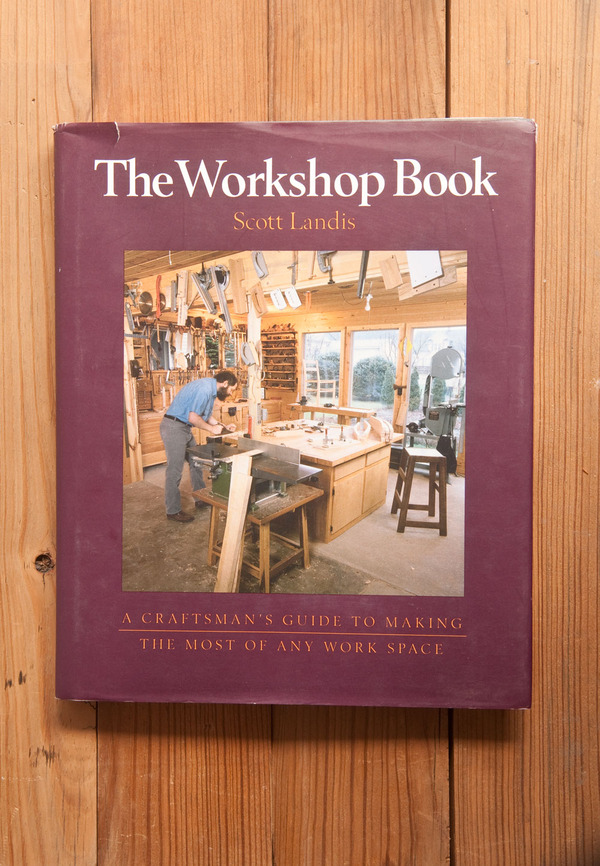
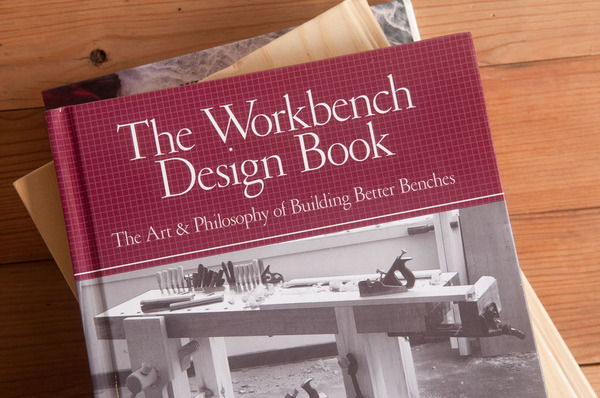
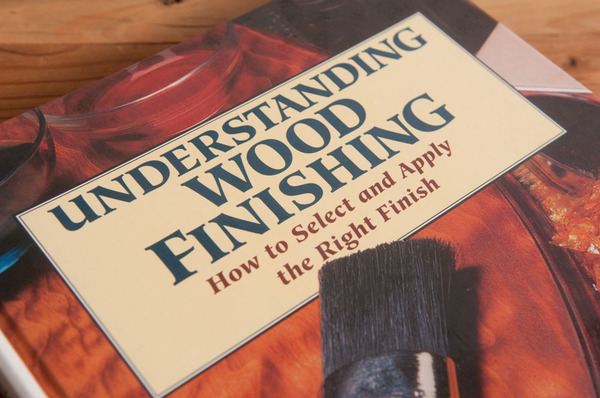
![credit: Getty Images [http://www.gettyimages.co.uk/detail/video/driving-down-7th-ave-and-broadway-through-times-stock-video-footage/98886322] created at: 07/21/2015](http://assets.manmadediy.com/photos/26499/Screen%20Shot%202015-07-21%20at%201.30.54%20PM_large.png?1437510700) If you're interested in the actual design, style, and swagger of a forgotten era, step into this time-capsule and see life as it really was in 1970's New York City. As someone who was once able to claim the moniker of a New Yorker, I found this footage engaging but I think any stranger to the land will as well. I feel like as modern men, most of our experience of the styles of the past are filtered through cinematic recreations, which is why I found this silent footage so striking. Just seeing the streets, the lights, and the people (especially void of sound) casts the whole nostalgic experience a different light.
If you're interested in the actual design, style, and swagger of a forgotten era, step into this time-capsule and see life as it really was in 1970's New York City. As someone who was once able to claim the moniker of a New Yorker, I found this footage engaging but I think any stranger to the land will as well. I feel like as modern men, most of our experience of the styles of the past are filtered through cinematic recreations, which is why I found this silent footage so striking. Just seeing the streets, the lights, and the people (especially void of sound) casts the whole nostalgic experience a different light. 




